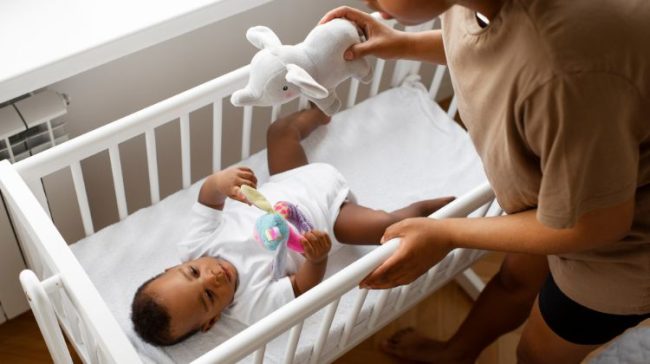For breastfeeding mothers who rely on breast pumps (manual or electric), ensuring their cleanliness and hygiene is very important. After all, clean and sanitized pump parts help protect precious breast milk from harmful bacteria and ensure your baby’s safety. This detailed guide walks you through the essential steps on how to clean and sanitize breast pump at home, leaving you confident and comfortable about every pumping session.
Why Cleaning and Sanitizing Your Breast Pump Is Important?
Before diving into the cleaning process, it’s essential to understand why it’s crucial to clean and sanitize your breast pump regularly:
- Prevents Bacterial Growth: Breast milk is an ideal breeding ground for bacteria. Failing to clean your breast pump properly can lead to the growth of harmful bacteria that can be passed on to your baby through contaminated milk.
- Ensure Milk Quality: A clean breast pump helps maintain the quality of expressed breast milk, ensuring it remains safe and nutritious for your baby.
- Extend Pump Lifespan: Regular cleaning and maintenance can prolong the life of your breast pump, saving you money in the long run.
- Protect Your Health: A contaminated breast pump can also affect the mother’s health, leading to potential infections or discomfort.
Steps for Cleaning and Sanitization of Breast Pump
Now, let’s dive into the step-by-step process of cleaning and sanitizing your breast pump at home.
Step 1: Gather Your Supplies
Before you begin cleaning your breast pump, gather all the necessary supplies:
- Your breast pump and its components (breast shields, valves, connectors, bottles, etc.)
- Warm water
- Dish soap (preferably fragrance-free)
- A clean bottle brush or dedicated cleaning brush
- A drying rack or clean towel
- A basin or large bowl
- Access to a microwave or a pot of boiling water
- A timer or clock
Step 2: Disassemble the Breast Pump
Begin by disassembling your breast pump into its individual components. This typically includes the breast shields, valves, connectors, bottles, and any other parts specific to your pump. Refer to your pump’s manual if you’re unsure how to disassemble it properly.
Step 3: Rinse with Warm Water
Before you start cleaning, rinse all the breast pump components with warm water to remove any leftover breast milk residue. Use your hands to gently swish and rinse each part under running warm water. This helps to prevent milk from drying and sticking to the components during cleaning.
Step 4: Wash with Soapy Water
Now, it’s time to wash the components with soapy water. Follow these steps:
- Fill a basin or large bowl with warm water.
- Add a few drops of fragrance-free dish soap to the water.
- Submerge all the breast pump components in the soapy water.
- Use a dedicated bottle brush or a cleaning brush designed for breast pump parts to scrub each component thoroughly. Pay close attention to areas that may have come into direct contact with breast milk, such as the breast shields and bottles. Make sure to clean inside any crevices or small openings.
Step 5: Rinse Thoroughly
After scrubbing, rinse all the breast pump components thoroughly with warm, clean water to remove any soap residue. Ensure that no soap remains, as it can affect the taste and safety of your breast milk.
Step 6: Air Dry or Towel Dry
There are two options for drying your breast pump components:
- Air Drying: Place the washed components on a drying rack, clean towel, or paper towels in a clean, well-ventilated area. Allow them to air dry completely. This method is preferable as it minimizes the risk of contamination from towels or cloths.
- Towel Drying: If you need to use the breast pump components immediately, you can towel dry them using a clean, lint-free towel. Ensure the towel is free of lint or debris to avoid contamination.
Step 7: Boiling Water Method (Monthly)
In addition to your regular cleaning routine, it’s recommended to sanitize your breast pump components once a month. This can be done using boiling water. Follow these steps:
- Fill a clean pot with enough water to submerge all the breast pump parts completely.
- Place the disassembled components in the pot.
- Bring the water to a rolling boil.
- Allow the components to boil for at least 5 minutes.
- After boiling, use clean tongs to remove the parts and place them on a clean towel or drying rack to air dry. Boiling water is an effective way to kill bacteria and sanitize your breast pump parts.
Step 8: Microwave Steam Sterilization (Optional)
Some breast pump components, especially those that come into direct contact with milk, can be sanitized using a microwave steam sterilizer bag or container. Follow these steps if you choose this method:
- Check if your breast pump parts are microwave-safe. Refer to the manufacturer’s instructions.
- Place the components inside the sterilizer bag or container and add the recommended amount of water.
- Seal the bag or container and follow the microwave sterilization instructions on the packaging.
- Once the sterilization cycle is complete, allow the components to cool before handling them. This method provides an extra layer of sterilization but may not be necessary for regular use if you are already cleaning and sanitizing your breast pump diligently.
Step 9: Reassemble and Store
Once all the breast pump components are dry, reassemble them carefully. Ensure that each part fits securely and there are no loose connections. Store your sanitized breast pump in a clean, dry place, preferably in a designated container or bag to prevent dust and contamination.
Tips and Best Practices
Here are some additional tips and best practices to ensure the cleanliness and safety of your breast pump:
- Wash Hands: Always wash your hands thoroughly with soap and water before handling your breast pump and breast milk.
- Designated Space: Establish a clean and designated area for assembling and disassembling your breast pump to minimize the risk of contamination.
- Regular Inspection: Regularly inspect your breast pump and its components for signs of wear, damage, or mold. Replace any damaged parts immediately.
- Breast Milk Storage: Follow proper guidelines for storing expressed breast milk. Use clean, sterile bottles or bags, and label them with the date to ensure you use the oldest milk first.
- Avoid Dishwashers: Avoid using dishwashers to clean your breast pump components, as high water temperatures and strong detergents may damage certain parts.
- Spare Parts: It’s a good idea to have spare parts on hand, such as valves and membranes, in case any components need replacement.
- Consult the Manual: Always refer to your breast pump’s user manual for specific cleaning and maintenance instructions, as recommendations may vary by brand and model.
- Keep It Clean: After cleaning and sanitizing your breast pump, store it in a clean and dry location to prevent contamination.
Final Thoughts
Maintaining the cleanliness and sanitation of your breast pump is essential for the health and well-being of both you and your baby. By following the step-by-step guide outlined above and adhering to best practices, you can ensure that your breast pump remains in excellent condition, your breast milk stays safe for consumption, and you can continue to provide the best care for your infant through breastfeeding. Regular cleaning and sanitizing are small but significant steps in the journey of motherhood, helping you create a safe and nurturing environment for your baby.
Frequently Asked Questions (FAQs)
1. How often should I clean and sanitize my breast pump?
You should clean and sanitize your breast pump after every use. In addition to this, it’s recommended to perform a more thorough sanitization process, such as boiling water or microwave sterilization, once a month.
2. Can I use regular dish soap to clean my breast pump parts?
Yes, you can use regular, fragrance-free dish soap to clean your breast pump parts. Ensure that you rinse thoroughly to remove any soap residue.
3. Is it safe to boil my breast pump parts?
Boiling breast pump parts is a safe and effective method of sterilization. Just make sure you use a clean pot and enough water to fully submerge the components. Boil for at least 5 minutes.
4. Can I put breast pump parts in the dishwasher?
It’s generally not recommended to put breast pump parts in the dishwasher, as the high water temperature and strong detergents can potentially damage certain components. Hand washing is the preferred method.
5. Do I need to sterilize the breast pump after each use?
Sterilizing the breast pump after each use is not typically necessary. Cleaning with warm, soapy water and thorough rinsing is usually sufficient for daily maintenance. Sterilization, such as boiling water or microwave sterilization, is recommended once a month or when you first receive your breast pump.
6. How should I store my breast pump after sterilizing it?
After sterilizing your breast pump, allow the components to cool and air dry completely. Once dry, reassemble the pump and place it in a clean, dry storage container or bag. Store the pump and its accessories in a cool, dry location away from direct sunlight. Avoid storing it in a humid or damp environment, as this can promote the growth of mold and bacteria. Ensure the storage area is free from dust and contaminants to maintain the pump’s cleanliness.
7. How do I sanitize breast pump tubing?
Tubing does not come into contact with breast milk and doesn’t need to be sanitized. However, it’s essential to keep it clean by inspecting it regularly for mold or moisture buildup and replacing it if necessary.
8. Can I use bleach to sanitize my breast pump parts?
While some manufacturers may recommend using a bleach solution for sanitizing, it’s important to follow their specific instructions if you choose this method. Ensure thorough rinsing to remove any bleach residue.
9. Can I share my breast pump with someone else after cleaning it?
It is not recommended to share a breast pump with another person unless the pump is a closed-system pump designed for multiple users, and each user has their own set of personal accessories.
10. What should I do if I notice mold in my breast pump parts?
If you discover mold in your breast pump parts, discontinue use immediately and replace the affected components. Ensure you clean and dry your breast pump thoroughly after each use to prevent mold growth.



